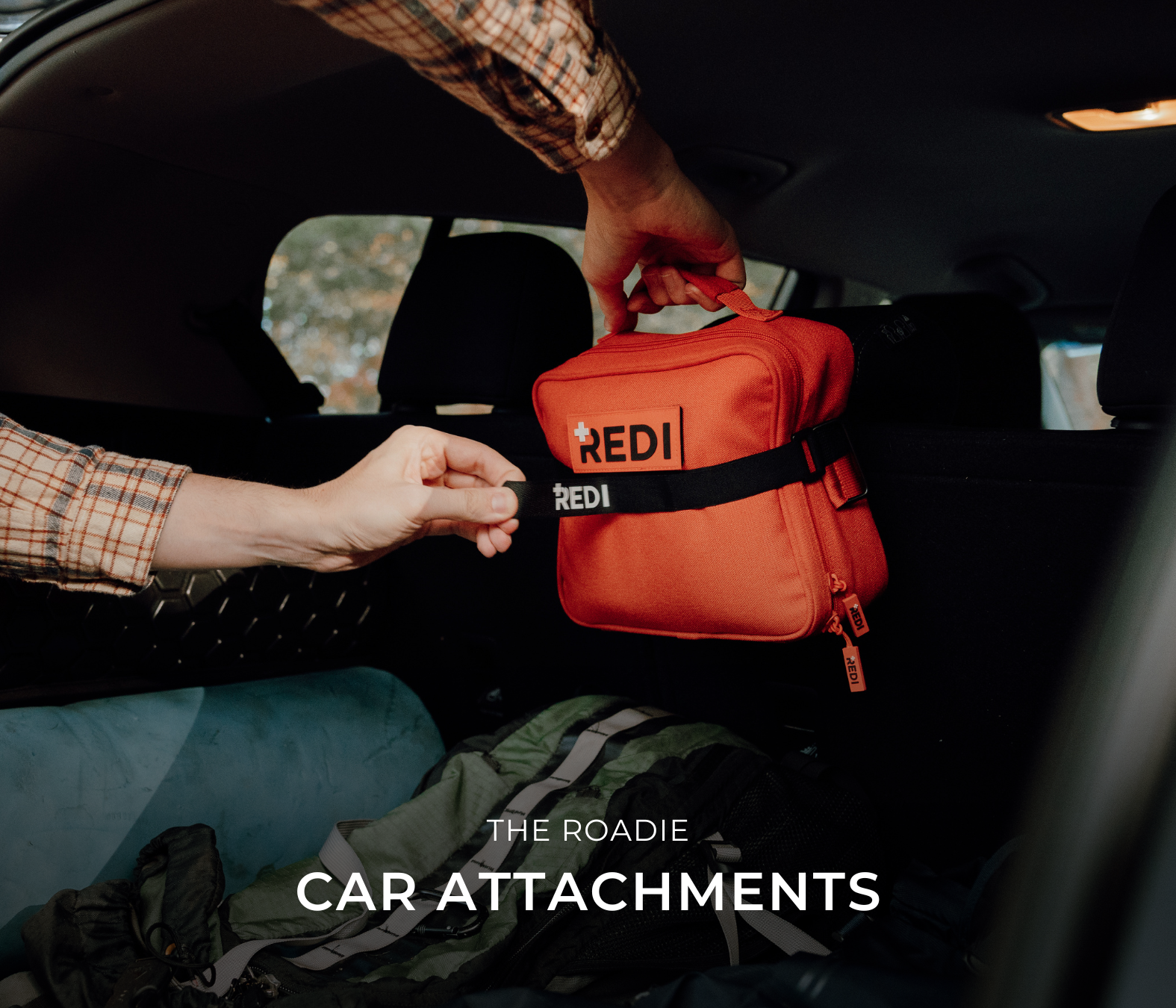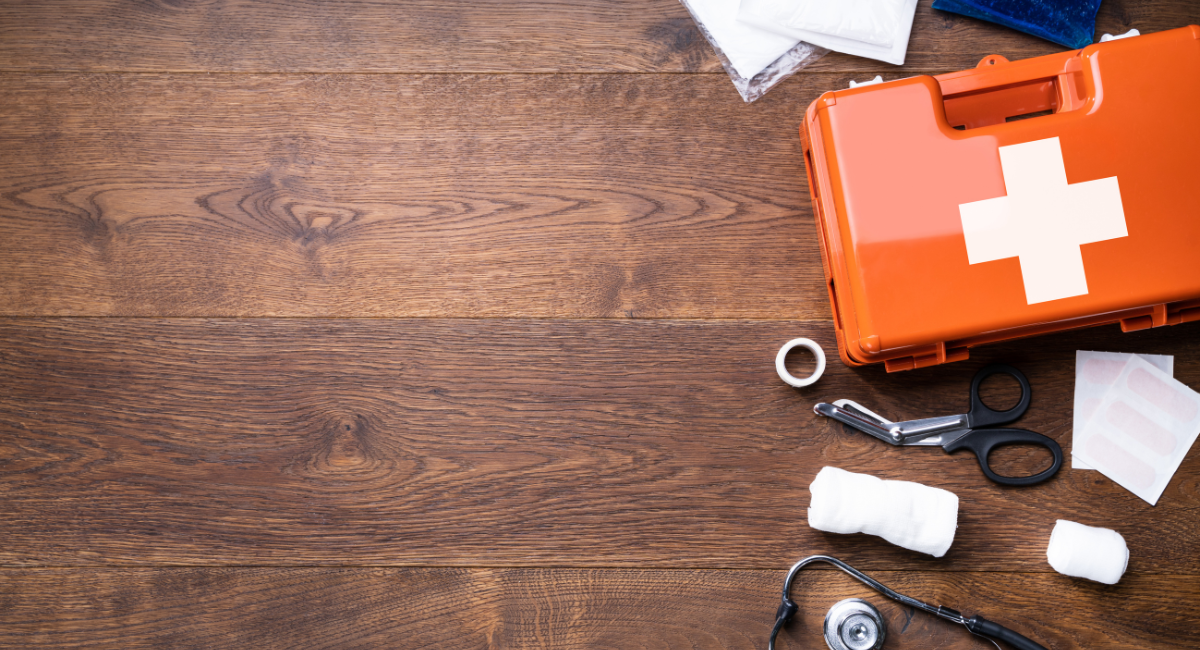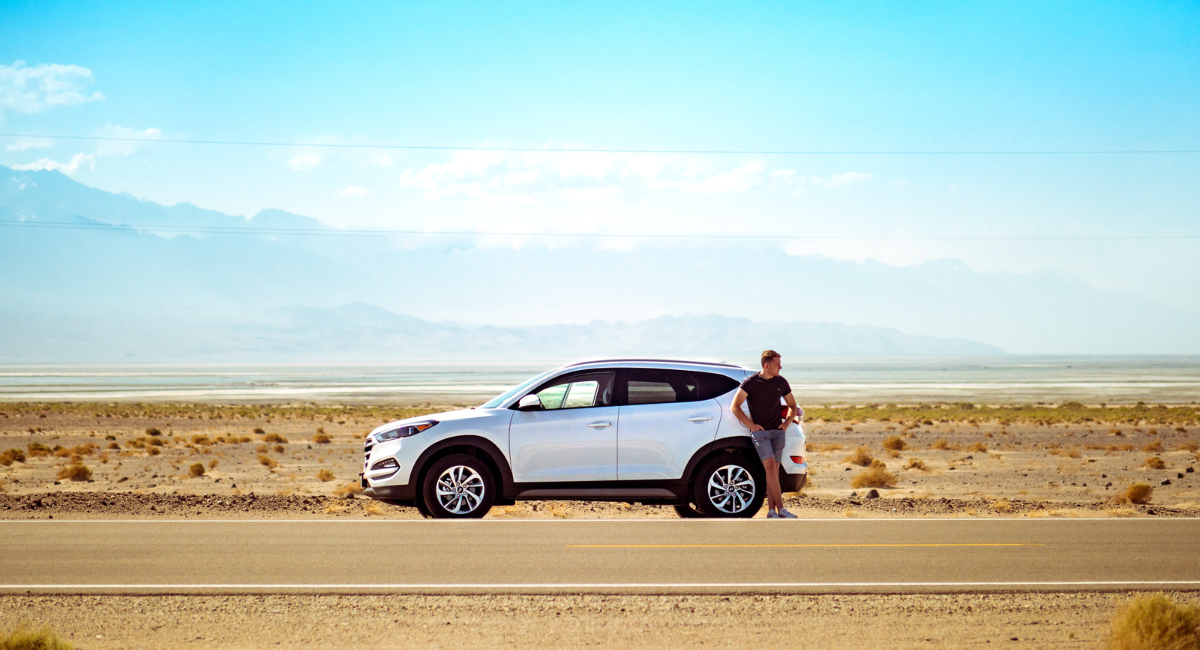Most people carry a first-aid kit in their homes. Why? Because accidents happen and we want to be prepared. Cooking and accidentally cut your finger? Grab a bandage. One of your kids bruised their knee? Grab an ice pack. Relaxing outside on the patio and the mosquitos start biting? Grab some bug spray. Part of having a home is being ready and having the supplies for these common situations.
But what about when you are not at home? Many of us commute to work, run errands, go out to eat, attend sporting events, etc. Accidents happen all the time when we are out of the house.
What is a Portable Medical Kit?
According to the National Safety Council (NSC) about half of injury-involved accidents occur outside of the home (46.4%).
Yet most of us do not have the basic safety supplies we need as soon we step foot out the door. I was guilty of this until I had a minor scare with my 2-year-old son at the park. Being a new father, I was oblivious to the fact that children are constantly putting themselves in harm’s way. Sharp stick? Let me pick that up. Steep incline that I could climb? On my way. It was only a matter of time until he was going to hurt himself and it never crossed my mind that I was not prepared. Well, eventually his time came, and my 2-year-old got his first scraped knee. Of course, there were tears and panicking, and all I wanted to do as a father was help.
“Why do I not have a medical kit in the car?”. It seems like common sense, but after talking to friends and family, a lot of us, including myself, are not prepared.
We started doing our research and spoke to professionals from all different backgrounds and industries. After getting feedback from Paramedics, EMT’s, Trauma Nurses, School Nurses, you name it – we had a solid foundation to create a readiness kit unlike anything on the market.
Fast forward through over a year of design and development... The Roadie Was Born - Redi’s solution to preparedness on the move.
Readiness Is Not A One-Size Fits All
Everyone is different and the type of safety kit you need to fit your lifestyle, might not be right for someone else. For instance, the individual who goes camping once a month in a remote area would be smart to carry trauma supplies (of course after being properly trained on how to use them). The mom who has no desire to be trained on trauma medicine does not need these supplies and therefore would need a different kit.
Choosing a portable medical kit to suit your lifestyle ensures that you and those around you have the necessary supplies when on the move. There are many options to choose from when it comes to choosing a kit. A travel kit can include your basic first-aid kit items (bandages, gauze, cut & scrape cleaner) all the way to critical life-saving trauma supplies such as a tourniquet. Having the correct safety kit stored in your vehicle can save you time, pain, and potentially a life.
15 Items To Include in a Portable Medical Kit:
1. Adhesive Plastic Bandages
These are most likely going to be the most used item in your kit. Make sure you have different sizes and types of adhesive bandages for different scenarios. For instance, the Roadie comes with small, medium, large, and fingertip adhesive bandages. You never know when you might get a cut or need to protect a wound.
2. Antiseptic Wash
It’s important to treat wounds with an antiseptic to prevent infections. Having an antiseptic in your portable safety kit allows you to properly treat wounds on the go.
3. Skin Treatments
This category encompasses a lot of different products, but the idea is to carry items that help treat common skin problems.
During the design process for the Roadie safety kit, we came up with a list of commonly needed skin treatments for the road. This included sunscreen, bug repellent, anti-itch gel, sting relief wipes, lip balm, and hydrocortisone cream.
Think of when you unexpectedly need to spend time outdoors and didn’t bring the sunscreen, or you’re at your kid’s soccer game and the bugs start coming out.
We have all these items at home, but how often do we have these items once we leave the house? Having the proper skin treatments in your travel kit allow you to be prepared in moments like these.
4. OTC Medications
Have a headache at the office? Upset stomach at dinner? Allergies kicking up at the park? The commonly used medications that you might have in your medical cabinet at home are often needed while you’re out of the house.
The Redi Roadie has 9 different over the counter medications in our safety kit. We also keep all these medications in an easy to access pouch that allows you to slip it into your purse or backpack since you might need another dosage later on in the day.
Make sure to stay up to date on the expiration date of these items as well. Often times they have an expiration date of 2 years or less. Many companies, such as Redi, offer refill kits to make it easy to replenish your expired medications.
5. Tweezers
Tweezers are an essential item for any safety kit. They’re perfect for removing splinters or debris that often happen with minor accidents.
It is important to get a quality tweezer as well, since many cheap tweezers do not have the grip or precision to remove small objects.
6. Glucose
If someone has a diabetic emergency, their blood sugar levels can become too low. This often results in dizziness or fainting and having glucose can help raise their blood sugar levels.
Glucose comes in all sorts of formats: drinks, tablets, gels, etc. Administering glucose to an individual suffering from these symptoms can help improve their bodily function and is essential to a portable first-aid kit.
7. Hand Sanitation
We all know how important it is to wash and protect our hands. Prior to treating an open wound, it is always recommended to wear nitrile gloves to prevent contamination.
It is also important to wash your hands before and after touching any contaminated surfaces to prevent the spreading of infectious bacteria.
Most of the times kits include anti-bacterial wipes or gels that kill up to 99.99% germs with active ingredients like alcohol or BZK.
8. Eye Wash
Eyewash is a saline solution used to rinse the eyes when they become contaminated with foreign particles or substances. Having a bottle of eyewash on hand in your portable first-aid kit could provide quick relief to an otherwise painful and irritating situation.
9. Thermometer
It’s always useful to have a thermometer with you. The ability to know whether or not someone has a fever provides you with critical information regarding the next steps of treatment.
There are many different types of thermometers: digital thermometers, ear thermometers, forehead thermometers, plastic strip thermometers, and even pacifier thermometers among others.
The Redi Roadie has an electronic thermometer with 5 different sheaths that allow you to reuse the thermometer in a sterile way.
10. Instant Cold Pack
Applying a cold compress to an injury restricts blood flow to the area. This is especially important to help slow down bleeding, reducing swelling and or inflammation, and for providing pain relief.
At home, it is easy to make a cold compress out of ice, a bag, and some cloth, but on the road, it is a little more difficult.
Luckily, there are instant ice packs that after activating (often times just squeezing or shaking) become instantly cold.
Having an instant cold pack in your travel kit can come in handy for many reasons including the above, which is why we include one in our Roadie kits.
11. Assortment of Gauze
Gauze is a type of wound dressing that has been used dating back to ancient Egypt. You can use gauze for wound cleansing, to help blood clotting, and for dressing wounds.
Gauze comes in all shapes and sizes. Many first-aid kits include small gauze pads, large gauze pads, and gauze rolls. Gauze is an essential item for first-aid and should be included in your travel kit to help provide proper treatment.
It is also important to include some sort of medical tape that help adhere the gauze to site.
12. Emergency Urinal
When developing the Roadie, we spoke to professionals and end users from all sorts of angles.
Since we were wanting to design the best medical kit for your vehicle, we thought about all the emergencies that could potentially happen on the road.
I think we all have a story about a time when we urgently needed to go to the bathroom or had to vomit.
Sometimes you are simply unable to pull-over and the available options are very undesirable.
We include an emergency urinal that also serves as a motion sickness bag in every Roadie. It has been designed for both sexes and provides a sanitary solution for these kinds of emergencies.
13. N95 Respirator
N95 respirators have been considered the “Gold Standard” of masks since they undergo rigorous testing and approval processes by the National Institute of Occupational Safety and Health (NIOSH).
They filter out 95% of particles .3 microns and larger and are designed to seal tightly against the face.
N95 respirators help to prevent inhalation of potentially harmful particles when there is excess pollution, smoke, or sickness.
Having spare N95 respirators in your vehicle can help for those times you need a quality mask and weren’t expecting it.
14. Burn Relief Supplies
When you are on the go, you don’t always have access to cold running water to help relieve the pain of burns.
Burn gels help to temporarily relieve pain by cooling and soothing damaged skin without trapping heat.
These gels are designed to draw out the heat of a burn and can save you discomfort if you get a burn while out of the house.
15. Scissors or Shears
Having a pair of shears in your portable medical kit is essential to perform a lot of basic first-aid activities.
Shears help cut gauze, tape, bandages, and clothing to help you access and/or treat a wound.
Prepping For You & Your Family
The supplies included in a first aid kit are the most important thing! "What would I need if I were out there in the middle of nowhere?" What would I need if I was gone at work? It is always about thinking ahead. About wondering, "WHAT IF??!?" It means using your imagination in regard to the "elements" that may be "lurking" around you as you venture out for a normal day of work/errands, but also a weekend roadtrip.
It is important that your trauma kit be lightweight. You need to take it with you and be able to transport it easily. It needs to include all of the things that you may need in an emergency, but also, you need to be able to easily carry it with you anywhere.
Additional Items to Include:
- ACE Bandage + Clips
- Hydrogen Peroxide
- Miniature Plastic bottle of Lysterine
- Aloe Vera Gel
- Salt
- 'Emergen-C' beverage packets
- Pocket Knife








